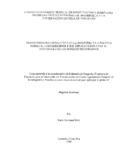| dc.description.abstract | En esta investigación se caracterizaron los bosques secundarios, además que se identificaron y analizaron algunos de los factores políticos, legales y económicos que han incidido en el desarrollo de estos ecosistemas, tomando como referencia las regiones Huetar Norte y Chorotega, que en conjunto poseen alrededor del 40 por ciento de los bosques secundarios de Costa Rica. La caracterización de los bosques secundarios permitió establecer algunas diferencias importantes entre los bosques secundarios secos y los bosques húmedos. Estas diferencias tienen que ver con características como el tamaño, la edad y el tipo de aprovechamiento al que son sometidos los bosques actualmente, y por lo tanto dan pautas útiles para posteriores propuestas de manejo forestal. Sin embargo, los resultados de las entrevistas a expertos indican la necesidad de otros cambios de política para favorecer su desarrollo y permanencia en el largo plazo. Los resultados de esta investigación aportan elementos que pueden contribuir al diseño de una política forestal que fomente la conservación y promueva el manejo productivo de los bosques secundarios, tomando en cuenta no solo las características propias del recurso, sino también las prioridades y requerimientos de los propietarios del bosque. In this study, we caracterized secondary forests as well as identified and analized various political, economic and legal factors that affect the development of these ecosysteMON. The study was carried out in the Region Huetar Norte and Region Chorotega. Withinn these two regions exists approximately 40 percent of secondary forests found in Costa Rica. The characterization of secondary forests in the region provided key means for differentiation between dry and humid secondary forest. The differences are associated with characteristics such as size, age and type of use actually being applied by the owners. These characterizations provided patterns of which to base future proposals of secondary forestry management. However, results from the experts interviewed indicated the necessity for the further changes in the forestry policy, in order to promote the management and conservation of secondary forests in the future. Elements were identified as a result of this investigation that could contribute to the design of forestry policies that seek to promote the conservation and productive management of secondary forests, taking into account not only the characteristics of the resource, but also the priorities and requirements of the owners. | es_ES |


